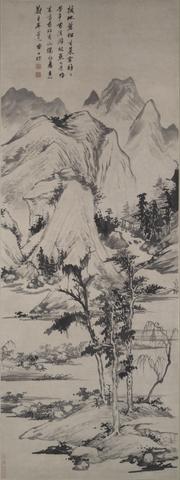The Gallery’s Chinese and Japanese collections were built initially through the gifts and bequest of Mrs. William H. Moore between 1937 and 1960. The greatest strengths of the Chinese holdings are ceramics and paintings, including a group of vessels from the Changsha region of Hunan Province, from around 500 B.C.E. to 1000 C.E., assembled for the most part by John Hadley Cox, B.A. 1935. Chinese paintings range from the Tang dynasty (618–907 C.E.) through the 20th century, with particular strengths in the 17th century and in the modern and contemporary period.
The Japanese collection has important concentrations in the arts of the Edo period (1615–1868). Approximately 1,200 prints, the majority of which are ukiyo-e prints of the 18th and 19th centuries, demonstrate the breadth of this medium, and recent additions have included a group of 20th-century prints. Several important screens and hanging scrolls of the 14th through 18th century highlight the department’s holdings of Japanese painting and calligraphy, while Japanese textiles are represented by fragments from the Shōsōin repository in Nara, Noh robes, kimonos, and a collection of Buddhist priests’ robes. Japanese ceramics, a growing area of the collection, span from the Neolithic period to the presend day, with important recent additions of contemporary ceramic sculpture.
The South Asian and Islamic collections, again founded by the gifts of Mrs. Moore, are represented by an excellent group of textiles, ceramics, miniature paintings, and manuscript pages. Gifts of over 80 Persian and Indian miniature paintings, and others of Indian sculpture, have greatly augmented the holdings of Iranian and Indian art.









